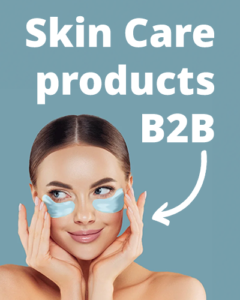In the current cosmetics market that is so competitive, knowing the final consumer becomes more and more important for B2B companies. Consumer data analytics can be used to extract useful information which is then applied in the development of specific products, bettering the marketing strategies and streamlining distribution.
The Importance of Consumer Data in B2B Cosmetics
The demands and the behavior of consumers are always changing. The B2B cosmetics companies have to be in the know of these changes which are real land therefore it is a must for them. Through the collection and analysis of consumer data, businesses can find trends, individualize products or services, improve marketing strategies and distribution. These are the data that businesses use to be ahead of the coming trends, customize their products and services for a particular need, design more effective marketing campaigns and guarantee that products will be there where and when they want them.
Types of Data to Collect
For the full utilization of consumer insights to happen, one must obtain a wide variety of data. Demographic data, for example age, gender, income level and location of the consumer base is a basic information about the consumers. Psychographic data is more than just demographics, it gives us the lifestyle of a person, his/her interests and values which are an important Aspect in understanding someone. Behavioral data is the key to understanding consumer behavior, it shows how consumers use products and brands, what they have purchased in the past, which brand they are loyal to and their online activities. Feedback and reviews, for instance, product reviews, customer surveys and social media comments are the qualitative information that is just as important as the quantitative data.
Methods of Data Collection
Consumer data collection is multi-dimensional. Surveys and questionnaires are the efficient tools, with online surveys being fast and cheap, while in-store surveys gather feedback at the place of purchase. Social media monitoring, that is to say the sentiment analysis and trend identification where you can see how consumers feel and notice what are the new trends in real-time. The data analysis, by means of sales and loyalty programs, which is purchased helps to track the popular products a people buy. Website analytics is a tool that allows you to know what are the most visited products or content and how do users browse your website.
Analyzing the Data
After the data is gathered, the following step is analysis. The correct data analysis can shed light on the issues related to actions. The audience is divided into different groups by demographic, behavioral and psychographic factors therefore the consumers are grouped based on different criteria. The process of trend analysis and predictive analytics allows one to see the patterns and trends which products or ingredients are getting more popular now, thus you can predict future trends. Customizing the marketing activities by designing special campaigns and products for a particular group of people who have bought from you before or liked your product will boost up the effectiveness of marketing strategies.
Implementing Insights
Data analysis should result in the identification of practical measures that can be used to improve business operations. In the process of product development, new products can be invented to satisfy changing consumer needs and existing ones can be enhanced with the help of feedback. The marketing strategies can be polished by the means of targeted advertising and content marketing which guarantee that messages are in tune with particular consumer segments. The optimization of the distribution, which is demand forecasting and channel optimization assures that products are stocked properly and available in preferred channels.
Case Study: The Data-Driven Transformation that will be successful
A top B2B cosmetics company managed to change its business by the means of consumer data. They carried out the extensive data collection, in which online surveys, social media monitoring and sales data analysis were included. By means of data analysis, they divided their audience and pinpointed the major trends that were in demand such as a rise in selling natural and organic products. With these findings, they came up with a new series of organic cosmetics, specialized marketing campaigns for the green consumers and fine-tuned the distribution channels to guarantee that these products were easily accessible. The final outcome was a huge rise in sales, better customer satisfaction and the brand loyalty has been strengthened.
Conclusion
In the changing world of cosmetics, knowing the final customer is a must for being in business. Through the gathering and processing of consumer data, B2B cosmetics companies will be able to obtain useful information which is going to lead them in product innovation, improvement of marketing strategies and distribution optimization. The use of data-driven approach is not only the current need of consumers but also it predicts future trends which will guarantee long-term success. Begin your data-driven transformation today and open up the whole B2B cosmetics business potential. In Braderm, we offer you the instruments and knowledge to make use of the consumer data. Go to our site and get more information.








